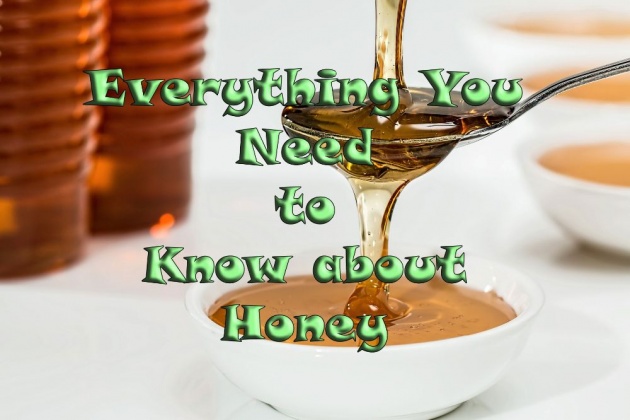
Image credit: stevepb via Pixabay / Edited with Photoshop
Honey is a delicious sweet treat and is the ultimate favorite of Winnie the Pooh. It is a much healthier sweetener than other types of sugar such as refined sugar. Aside from using it as a food or beverage sweetener, it also has many medicinal properties that almost anyone can benefit from. Put it that way, who doesn't love honey? However, do you really know what it is, where it came from, and how it is made? Let me share with you what I have learned about honey, so far.
❀ Fast Facts about Honey ❀
- Honeybees make honey by harvesting honeydew droplets or nectars from flowers
- Honey doesn't ever spoil when stored properly.
- Honey contains enzymes, vitamins, minerals, and water which are all essential substances to sustain life.
- Honey is the only food that contains pinocembrin, an antioxidant that helps improve brain function.
- Honey is the only food produced by insects that can humans eat.
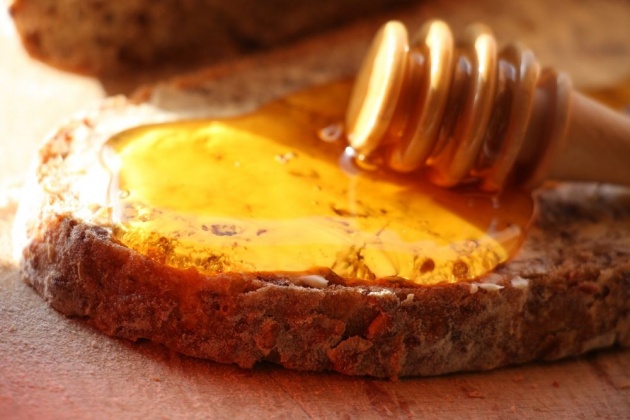
Image credit: estelheitz via Pixabay
❀ What is Honey? ❀
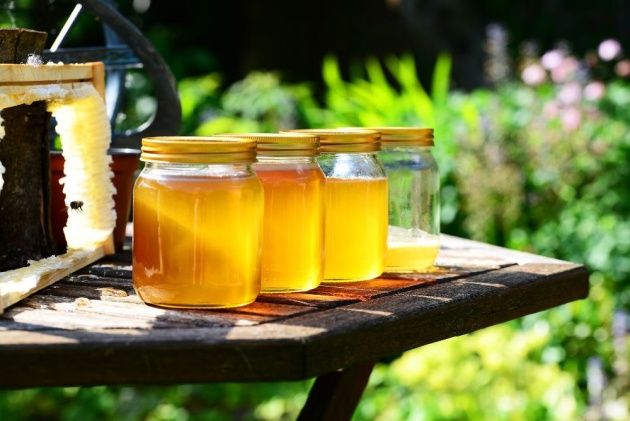
Image credit: PollyDot via Pixabay
Honey is a sweet, thick liquid made by industrious honeybees using the nectar of various flowers or honeydew droplets. Bees store them inside beehives for eating during the winter season when food is scarce. It can be added to foods or beverages as a sweetener. It also has medicinal properties due to the various nutrients and antioxidants it contains.
Honey has all the substances necessary to sustain life such as vitamins, minerals, enzymes, and water. It is also the only food that contains pinocembrin, an antioxidant that helps improve brain functions, as well as the only type of food that does not spoil. Did you know that the honey found in the tomb of Tutankhamun was still edible? Honey may crystallize a couple of months after it was harvested. This is a natural process and does not alter any of its properties.
❀ How is Honey Made? ❀
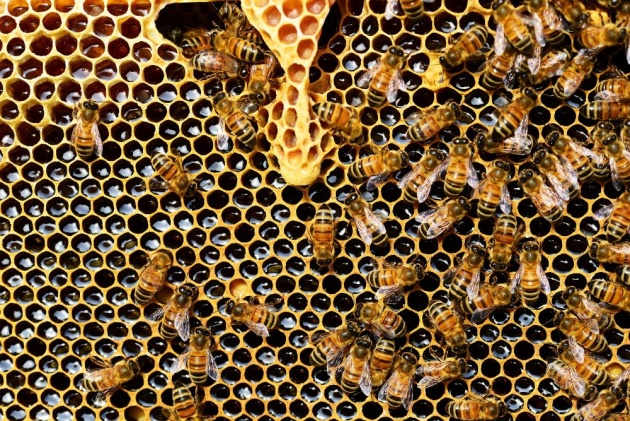
image credit: PollyDot via Pixabay
Bees collect nectars from flowers and puts them in their honey stomach which is a second stomach and a separate compartment from the ones they use for digesting food. While inside the stomach, the liquid mixes with enzymes that transform its pH and chemical composition, allowing the liquid to be stored for a longer period of time.
Upon the return of the bee to the hive, it regurgitates and passes the nectar to another bee. This regurgitation process is done several times until the nectar is partially digested and gets deposited into a honeycomb. At this point, the nectar is still a viscous liquid and very high in natural yeasts. When left that way, the water will eventually evaporate. However, the substance may also ferment. To avoid this, the bees vigorously flap their wings to create a strong wind across the honeycomb to expedite the evaporation process. When they are satisfied with how much water has been evaporated, they will start to seal the honeycomb by secreting a liquid from their abdomen that will eventually harden into beeswax, creating an airtight container. This allows the honey to be stored indefinitely.
If you're still curious, here's a video on how honey is made
Video credit: It's Okay To Be Smart via Youtube
❀ Common Types of Honey ❀
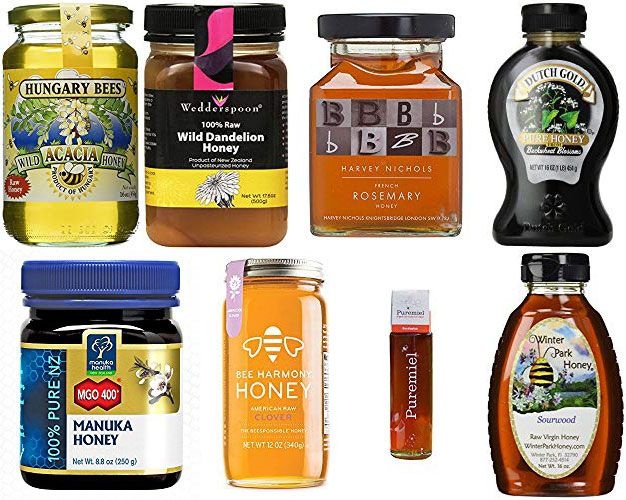
image credit: Chineyes via bitLanders
For most people, honey is just honey. But, did you know that there are various types of honey based on which flower the nectar was gathered? Crazy, I know!
❀ Clover honey
Clover honey has a much lighter color than most types of honey because the nectar comes from white blossoms. It is mainly produced in Canada and New Zealand. This type of honey has a mild with a hint of floral sweetness to it in terms of taste. You may also notice a slightly sour aftertaste. Overall, this is ideal for baking and other kitchen purposes.
❀ Manuka honey
You may raise an eyebrow or two when I tell you that honey can be directly applied to wounds pretty much like an ointment. However, not all types of honey are as effective in healing wounds as manuka honey. Manuka honey has special healing abilities because of its antibacterial properties. It is so powerful that it can even combat infections like MRSA which has strains that are becoming antibiotic resistant.
Manuka honey comes exclusively from New Zealand as it is derived from the Manuka tree of this country. Manuka honey has a medicinal taste that many people may not find pleasant.
❀ Sourwood honey
Sourwood honey is not sour as its name implies. It is only named as such because this type of honey is derived from the sourwood trees located in the Appalachian Mountains that run from Northern Georgia up to Southern Pennsylvania.
It has a very light color since it comes from white blossoms and has a very pleasant taste. Some people even say that it almost tastes like caramel or butter which makes it a tasty spread on bread.
❀ Buckwheat honey
Buckwheat honey looks and tastes like molasses and malt, so it is much darker and has a very strong flavor. It may also leave a lingering aftertaste than many are not fond of. However, this type of honey has more antioxidants than the lighter ones. It is also a rich source of iron.
The nectar used for this type of honey is derived from buckwheat flowers that are grown in Ohio, New York, Pennsylvania, and Minnesota. Mead makers would often use buckwheat honey to make a more flavorful honey mead.
❀ Rosemary honey
You've probably heard about the herb rosemary. You may even have used it in your own kitchen. But, have you heard about rosemary honey? Rosemary honey, just like the herb, packs a powerful punch. It is light yellow in color and has a strong sweet flavor. Rosemary honey also has various medicinal properties as it is believed to help with liver function, high blood pressure, gout, digestion, and even cardiovascular issues.
❀ Dandelion honey
For years, homeowners believe that dandelions are pesky weeds that need to be removed from their backyards. But, recent studies have proven that this "weed" actually possess medicinal properties. Take for example the honey made from dandelion flowers. Dandelion honey can help improve liver issues.
Additionally, a teaspoon of this honey mixed with mineral water for a daily drink can help improve digestive problems such as gastritis, constipation, and colitis. Honey made from yellow dandelion flower will have a very vivid yellow color that is distinct from the others.
❀ Acacia honey
Acacia honey comes from the Black Locust tree found in Nort America and Europe. It is another light-colored honey with a very sweet flavor. However, the overall taste is still mild enough that it doesn't overpower the taste and scent of what is added to it. This makes it perfect for tea drinkers who want to savor the taste and aroma of the tea. Acacia honey combined with chamomile or Valerian herbal tea is a very soothing and relaxing concoction.
It also has a higher concentration of fructose than sucrose that's why it remains liquid-like longer than other types of honey. This also makes it ideal for diabetics. Acacia honey can also improve liver and intestinal tract functions, as well as act as an anti-inflammatory.
❀ Eucalyptus honey
The eucalyptus plant is the favorite food of Koalas. But aside from that, did you know that it also has a nectar that can be turned into honey? Well, I certainly didn't. Eucalyptus honey--who would have thought that such a thing exists? This type of honey is produced in Australia (as you may have already guessed) and California. It has a very distinct taste as it has a herbal flavor with a hint of menthol. This type of honey is best for headaches and cold. So when you are feeling a bit under the weather, go ahead and whip yourself up a tea with eucalyptus honey to help make you feel better.
❀ Forms of Honey ❀
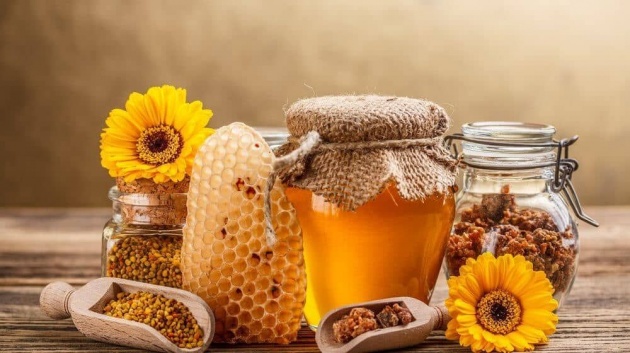
Image credit: https://organicdailypost.com
Liquid honey is the most common form of honey when you buy it at the supermarket. But, it can also come in different forms such as the following:
❀ Liquid honey
Honeycombs are put through an extractor to get the honey from the combs.
❀ Comb honey
As the name implies, this form of honey comes in the exact form it was originally left by the bees which includes part of the honeycomb.
❀ Chunk honey
Chunk honey, on the other hand, has parts of comb honey which have been covered with liquid honey.
❀ Granulated honey
Granulated honey is simply powdered honey. It is made by freezing or drying the honey in order to remove the water out of it.
❀ Whipped honey
Whipped honey comes in a finely crystallized form which makes it more spreadable. It is one part granulated honey and 9 parts liquid honey that has been stored at a temperature of 57 degrees to keep it firm.
❀ Health Benefits of Honey ❀
Honey is not just another run-of-the-mill sweetener. It actually has various health benefits thanks to its many medicinal properties. Here are just some of the health benefits of honey.
- It is rich in antioxidants.
- It helps manage blood sugar levels.
- It reduces cardiovascular health risks.
- It helps facilitate weight loss
- It is effective for treating wounds.
- It works as a natural cough syrup.
- It is a natural energy booster.
- It helps you get better sleep.
- It offers relief from gastrointestinal disorder symptoms.
- It helps prevent the occurrence of dandruff and itching of the scalp.
- It helps reduce allergy symptoms.
If you're interested to find out more, I also wrote a more detailed blog about these health benefits. You can read it here.
❀ Uses of honey ❀
If you're finally convinced about the benefits of honey, check out these useful honey uses.
❀ For better digestion
Eating one or two tablespoons of honey helps counteract indigestion because it doesn't ferment in the gut.
❀ For counteracting nausea
Counteract your nausea with a mixture of honey, ginger, and lemon juice.
❀ As an exfoliator
Mix 2 cups of honey in your bath and soak for 15 minutes. Add a cup of baking soda and soak for another 15 minutes. And, you're done!
❀ For better sleep
Drink warm milk mixed with 1 teaspoon of honey before going to bed. This increases your melatonin, thus helping you sleep better at night.
❀ As a moisturizer
Use honey as a hydrating lotion by mixing 1 tablespoon of honey with olive oil and a squeeze of honey. You can also use it as a lip moisturizer. Combine 1 part of warm beeswax that has been recently melted with 3 parts olive oil. Add 1 or 2 tablespoons of honey to the mixture. It's ready for use once it has hardened.
❀ As a hair mask
For that extra shine, you can use a honey hair mask. Simply mix a teaspoon of raw honey to 5 cups of warm water. Rinse your hair thoroughly with the mixture, air dry, and style as usual.
❀ As a hair conditioner
Combine together 1/2 cup of honey and 1/4 cup of olive oil. Slightly warm the mixture on the stove--be careful not to boil it. Apply on your hair and wrap with a towel to let the mixture soak in your hair. Once completely soaked in, remove the towel and thoroughly rinse your hair with cool water.
❀ As a natural hair wax
Combine the following ingredients in a microwave-safe bowl:
- 1 tablespoon honey
- 1 tablespoon lemon juice
- 3 tablespoons brown sugar
Warm the mixture slightly in the microwave. Let it cool and apply on facial hair using a popsicle stick. Put a piece of muslin cloth over the area, rub slightly, then pull the cloth away from the skin. Apply a thin layer of tea tree oil where the hair was removed.
❀ As a makeup remover
Make a paste with honey and baking soda. Add a few drops of tea tree oil and apply on your face in a circular motion with a washcloth. Rinse with warm water afterward.
❀ As a face mask
Combine 1 tablespoon raw honey and 1 tablespoon coconut oil in a small bowl using a spoon until thoroughly mixed together. Apply on face and neck using your fingertips. There are certain types of honey that crystallizes so be gentle when applying the mixture as the crystallized honey can be rough on the skin. Let your skin soak in the mixture for 20 minutes then rinse off with lukewarm water.
❀ For bad breath
Mix the following ingredients:
- 1/4 cup water
- 1 teaspoon raw honey
- 1 teaspoon lemon juice
Gargle for 3 minutes for a fresher breath all day long.
❀ As a natural cough syrup
Honey is also an effective cough treatment. All you need are the following ingredients:
- 1 cup of filtered water
- 1/4 cup fresh ginger root
- 1/4 cup marshmallow root
- 1 tablespoon cinnamon
- 1/4 cup freshly squeezed lemon juice
- 1 cup honey
Pour the water into a saucepan with all the dry ingredients. Bring to a boil. Let the mixture simmer until it is reduced by half. Remove all the herbs by pouring the mixture through a fine mesh strainer or cheesecloth. Add the lemon and honey on the mixture while still warm--but not boiling.
❀ For strengthening weak nails
Honey can also be used to strengthen weak and brittle nails by soaking them in a mixture of 1 tablespoon honey and 1/4 cup apple cider vinegar for 10 minutes. Repeat weekly for better results.
❀ As an eye bag remover
Combine 1 teaspoon of honey and 1 teaspoon of sweet almond oil and spread it under the eye. After 20 minutes, rinse the mixture off and apply a thin layer of organic coconut oil. Do this a few times a week for better results.
❀ As a wound cleaner
Honey has antibacterial properties that make them an ideal treatment for wounds. Apply honey directly onto a minor wound or burn just like an antibiotic ointment.
❀ As a natural energy booster
Blend the following ingredients in a Vitamix or regular blender until the honey dissolves.
- 1/4 cup fresh lime juice
- 1/4 cup fresh lemon juice
- 2 cups water
- 1/8 teaspoon of sea salt
- 2 tablespoons of raw honey
Be sure to bring some of this healthy sports drink on your next long hike for that extra energy boost.
❀ For morning sickness relief
Warm ginger tea with organic honey is highly effective for calming the tummy of pregnant women.
❀ As a scar remover
1 tablespoon of honey combined with 1 tablespoon of baking soda can help significantly reduce the appearance of scars. Apply the paste on the scar for 30 minutes and rinse with cold water. Do this every day until the scar starts to fade.
Video credit: Show and Tell via Youtube
❀ Final Thoughts ❀
Bees will work thousands of hours just to fill a small jar with honey. After learning this fact, it makes me feel kinda bad for "stealing" their food, especially since it's their special stash to see them through the winter season when food is scarce. On the bright side, beekeepers do leave enough honey for the bees so they can survive during this time. So, when you enjoy a meal or beverage infused with the deliciousness of honey, make sure to say a silent thank you to these industrious honeybees.
~oO0Oo~~oO0Oo~~oO0Oo~~
Thanks for reading! Have a wonderful day ahead of you and keep smiling. :)
Written by Chineyes for Bitlanders
For more quality blog posts, you may visit my page
Not yet on Bitlanders? Sign up now and be rewarded for sharing ideas, photos, and videos!



